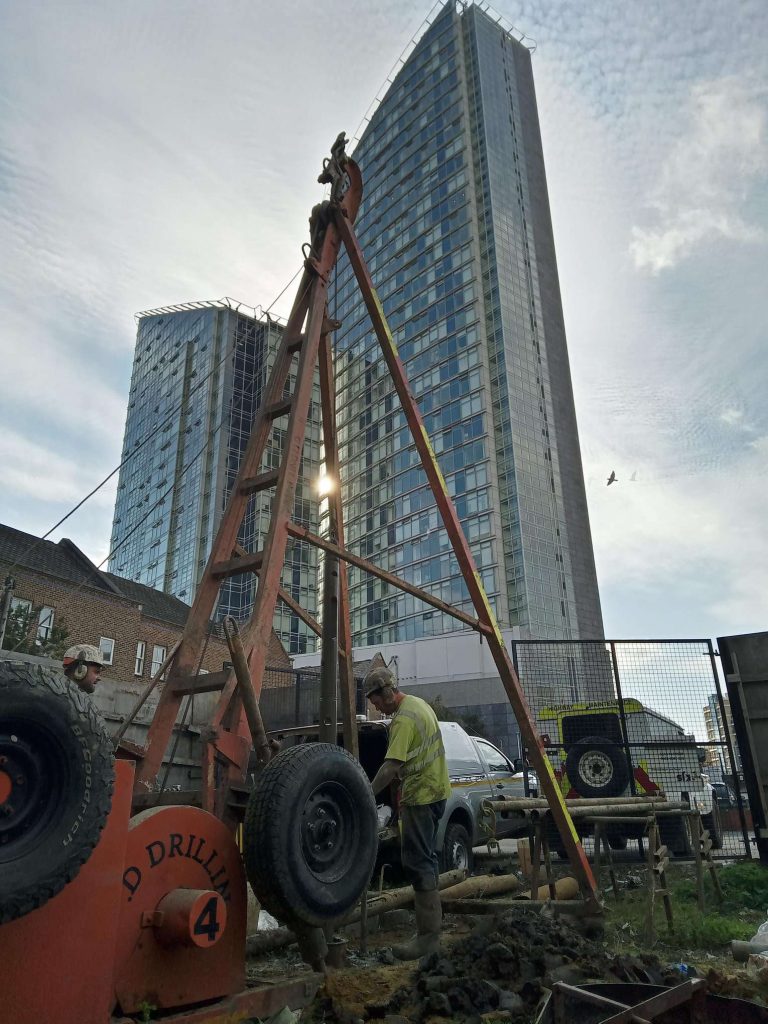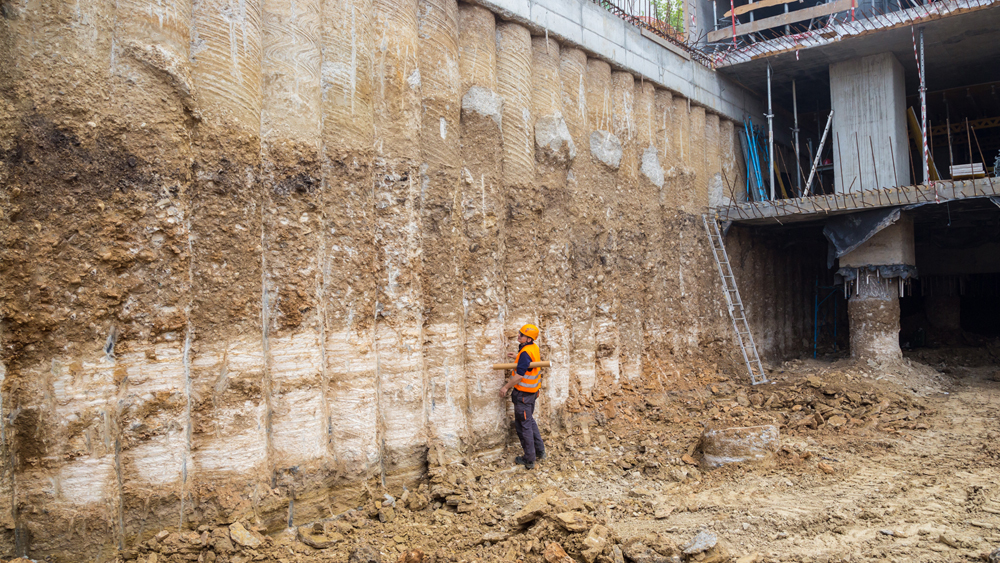A Thorough Overview of the Secret Responsibilities of Geotechnical Designers in Website Characterization and Ground Improvement Methods for Design Solutions
Geotechnical designers are indispensable to the successful implementation of engineering tasks, entrusted with the critical obligations of website characterization and the application of ground improvement methods. Their job involves a detailed evaluation of subsurface problems, using different testing methods to identify dirt and rock residential properties. This fundamental expertise not only informs design choices however additionally mitigates possible threats connected with ground instability. As we explore the diverse duties of these experts, it ends up being noticeable just how their proficiency shapes the safety and security and effectiveness of design options. What certain strategies and assessments stand out in this crucial self-control?
Function of Geotechnical Engineers
Geotechnical designers play a critical function in the design and building of framework by analyzing the behavior of dirt and rock under the surface - geo tech engineering. Their duties encompass evaluating subsurface conditions to notify layout choices that ensure architectural stability and security. By conducting comprehensive analyses of soil homes, consisting of shear toughness, permeability, and compressibility, geotechnical engineers offer critical information that influences the option of proper building materials and strategies
In enhancement to analyzing dirt mechanics, geotechnical designers are tasked with identifying possible hazards such as landslides, sinkholes, and ground settlements. Their know-how helps mitigate risks connected with these geotechnical phenomena, thereby safeguarding both the environment and public safety and security. They also team up very closely with various other design techniques, making sure that geotechnical factors to consider are incorporated right into overall job layout.
Moreover, geotechnical designers take part in the analysis of existing frameworks, offering referrals for retrofitting and repairs when needed. Their thorough understanding of soil-structure interaction is necessary for the advancement of lasting infrastructure remedies. On the whole, the function of geotechnical designers is indispensable to the effective realization of building tasks, ensuring they are risk-free, durable, and compliant with governing standards.

Site Characterization Processes
Reliable site characterization procedures are essential for recognizing the subsurface problems that affect project layout and implementation. Geotechnical engineers utilize a methodical technique to gather, review, and interpret information regarding groundwater, soil, and rock qualities. This process begins with a detailed testimonial of existing literature and historical website information, offering understandings right into previous website problems and prospective obstacles.

Data analysis complies with fieldwork, where engineers make use of geostatistical methods to interpret findings and produce geological models. With diligent website characterization, geotechnical engineers lay the groundwork for effective task implementation, enhancing and reducing unforeseen problems resource allowance.
Soil and Rock Testing Approaches
While comprehending subsurface problems is essential, the choice of appropriate soil and rock screening techniques is similarly crucial for precise evaluation and design. Geotechnical engineers utilize a range of testing techniques to examine the mechanical and physical properties of soil and rock materials.
Research laboratory examinations, such as Atterberg limitations, grain dimension evaluation, and unconfined compressive strength examinations, provide vital information on dirt behavior under different moisture problems and navigate to this website loading scenarios. These examinations help establish soil classification and forecast negotiation or shear stamina characteristics essential see this website for structure design.
In-situ screening approaches, consisting of Criterion Penetration Tests (SPT), Cone Infiltration Tests (CPT), and stress meter tests, permit engineers to collect data straight from the ground. These methods offer beneficial insights right into the soil's density, consistency, and stratification without the requirement for considerable tasting.
Rock screening generally includes core tasting and research laboratory evaluation to analyze buildings like uniaxial compressive stamina and rock high quality designation (RQD) With each other, these soil and rock screening techniques enable geotechnical engineers to make educated decisions relating to site-specific difficulties, guaranteeing the safety and security of engineering services.
Ground Renovation Strategies
Ground renovation methods are crucial for boosting the engineering residential or commercial properties of soil, therefore raising its load-bearing capacity and reducing settlement. These methods are essential in resolving difficulties offered by bothersome or weak soils, which can substantially influence the security and durability of structures.
Various ground improvement methods are employed, including compaction, grouting, and soil stabilization. Compaction involves boosting the thickness of soil with mechanical ways, which enhances its shear stamina and minimizes compressibility. Grouting, on the other hand, includes injecting a fluid product right into the ground to load gaps and enhance dirt communication. This technique is specifically effective for dealing with loose sands or broken rock.
Dirt stabilization incorporates a variety of methods, from chemical additives to mechanical therapies, aimed at improving the soil's resistance to disintegration and contortion. Methods such as lime stablizing or concrete mixing change the residential or commercial properties of the soil at a bit level, improving its total efficiency.
Value of Geotechnical Analyses
Geotechnical evaluations play a crucial function in the preparation and style of engineering projects, as they give important details about the subsurface conditions. Comprehending dirt properties, rock formations, groundwater degrees, and possible geohazards is vital for making sure the security and security of structures. These analyses allow designers to make informed decisions relating to site choice, layout specifications, and building methods.
The relevance of geotechnical assessments expands beyond initial project phases; they are critical in threat administration and cost performance. By recognizing potential problems early, such as dirt negotiation, slope instability, or extreme groundwater, engineers can design appropriate reduction approaches, lowering the likelihood geotech engineer of costly delays and architectural failures. Furthermore, these assessments sustain compliance with regulatory requirements and boost the sustainability of engineering methods.

Verdict
In conclusion, geotechnical designers are vital to guaranteeing the safety and stability of design jobs with thorough site characterization and ground improvement techniques. civil consulting engineers. Their organized technique to analyzing subsurface problems, combined with their referrals for reliable ground alteration, significantly boosts soil residential properties and load-bearing ability. The proficiency of geotechnical designers not just promotes educated task preparation however also guarantees conformity with policies and fosters reliable interaction among stakeholders, eventually adding to effective engineering outcomes
Geotechnical engineers play a pivotal function in the layout and building of facilities by assessing the habits of dirt and rock beneath the surface area. By performing in-depth analyses of soil homes, consisting of shear compressibility, stamina, and leaks in the structure, geotechnical engineers provide critical information that influences the option of appropriate construction products and techniques.
In addition to assessing dirt mechanics, geotechnical designers are tasked with identifying possible hazards such as landslides, sinkholes, and ground negotiations. Geotechnical designers utilize a methodical approach to collect, assess, and translate information regarding rock, dirt, and groundwater features. By recognizing possible problems early, such as dirt settlement, incline instability, or extreme groundwater, designers can create proper mitigation methods, reducing the chance of architectural failings and expensive hold-ups.